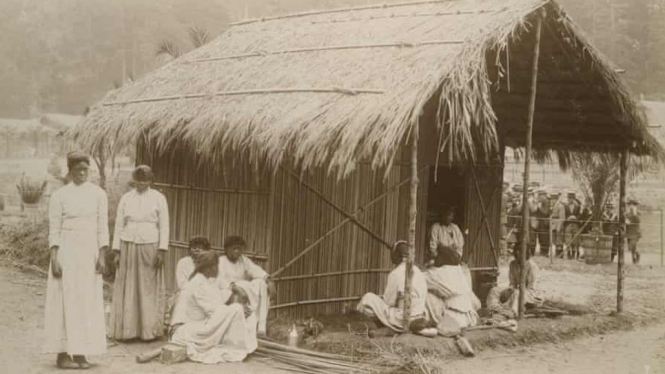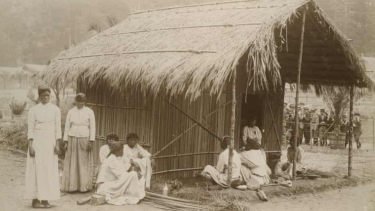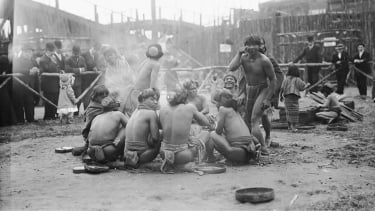- U-Report
VIVA – In the late 1800's colonial period exhibitions became popular in the western world, these exhibits and exploitation of real people called as Human Zoo. It turns out that not only exhibition the artifacts but also people too.
In the pre-cinema era, these shows allowed westerners to see foreigners they had only heard of and caused large audiences to clamor for the show. Here’s the event that featured human zoo at that time:
1. The Igrot Village
Suku Igorot
- Library of Congress
One of the most popular exhibits was the Igorot village, an ethnic group perceived as the least civilized of those on display.
The crowds of audience and the revenue generated from this attraction have surpassed that of all the other villages combined. The exhibition features natives’ people in minimal clothing and who could often be found eating dogs as the audience clamoured for a better look.
The tribe people also rarely perform sacred rituals, this is only as a daily entertainment to please the audience who need pleasure.
After the exhibition ended, the popularity of the show continued and members of the Igorot troupe became one of the tools at fairs and carnivals in and around North America. After protests by Filipinos, the US government in the Philippines banned the show in 1914.
2. 1904: St. Louis World’s Fair
World's Fair of St. Louis in 1904 was an international exhibition in Missouri which, like other world fairs of the time, was an entertaining spectacle, as well as a means of promotion for products and industries from various regions.
The event boasts a variety of displays, including windmills, pavilions made of corn, and a number of large-scale "living fairs," including an exhibition of reinvented Filipino villages, an initiative of the US Government in the Philippines.
The exhibition features an area of ??47 hectares with more than 1,000 Filipinos from dozens of tribes.
3. Ota Benga
The St. Louis Fair didn’t just display Filipinos, it also featured an exhibit of Africans, including a Congolese man named Ota Benga. After the St. Louis Fair wrapped up, Benga was taken to New York to become part of an exhibition at the Bronx Zoo. He apparently believed he was being hired to care for the zoo’s elephant.
He was gravely mistaken. Touted as a savage pygmy, Benga quickly became a highlight of the zoo, and was displayed in a monkey house.
Benga’s teeth were filed to the point, as was customary in his tribe, and the floor of his cage was littered with bones placed there by zookeepers to create more of a threat.
4. Human Zoos of the 21st Century
Even today, there are echoes of human zoos. The reclusive Jarawa Tribe live on India's Andaman Island.
A video released in 2012 showed images of a safari trip to this island in the beautiful Bay of Bengal, now a popular tourist attraction. But the safari didn’t just showcase animals — these tourist trips promised to allow visitors to observe the Jarawa tribe in their natural habitat.
The video was the proof of something more troublesome, and more exploitative; it showed islanders performing for the tourists on safari.
These indigenous people had only begun to have contact with mainlanders, and their willingness to interact with the outside world was exploited and resulted in what some groups believed were no better than human zoos of yore.
At the entrance to the nature reserve, there is a sign prohibiting interaction or “feeding” the tribe, but tourists flock to the hundreds every day, bananas and nuts in hand. While police officers are there to protect the tribe from direct contact, at least one video reveals a police officer instructing the tribe's naked women to dance, as food is thrown at them.
A report compiled by The Guardian say that throwing food, in the hopes of a show, is actually a routine, not an anomaly.
The Indian government demands a crackdown on such shows and in 2013, India's Supreme Court ordered a complete ban on such safaris. However, some activist groups claim such activities continue in secret, despite the ban.
So, that's human exploitation which is actually a noble creature in the world, but is still enforced and exploited at the price of humanity for the benefit of certain parties.
























